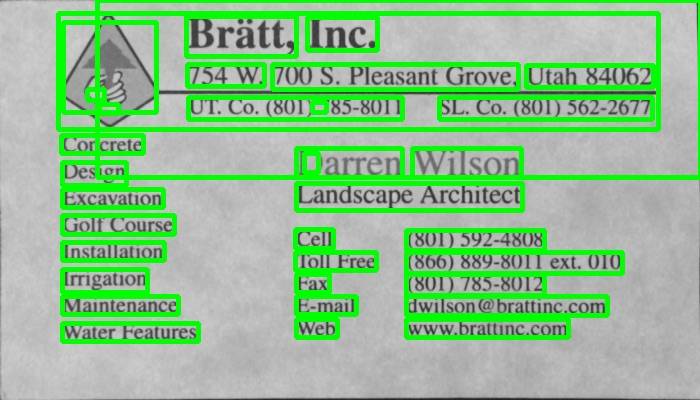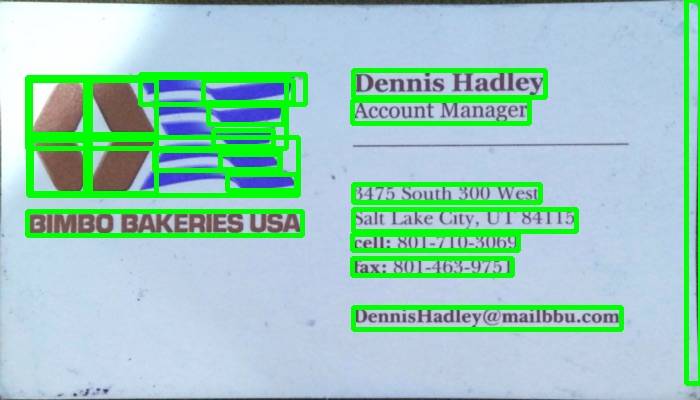Extraction du texte OpenCV
J'essaie de trouver les boîtes englobantes de texte dans une image et j'utilise actuellement cette approche:
// calculate the local variances of the grayscale image
Mat t_mean, t_mean_2;
Mat grayF;
outImg_gray.convertTo(grayF, CV_32F);
int winSize = 35;
blur(grayF, t_mean, cv::Size(winSize,winSize));
blur(grayF.mul(grayF), t_mean_2, cv::Size(winSize,winSize));
Mat varMat = t_mean_2 - t_mean.mul(t_mean);
varMat.convertTo(varMat, CV_8U);
// threshold the high variance regions
Mat varMatRegions = varMat > 100;
Quand on lui donne une image comme celle-ci:

, Puis quand je montre varMatRegions je reçois cette image:
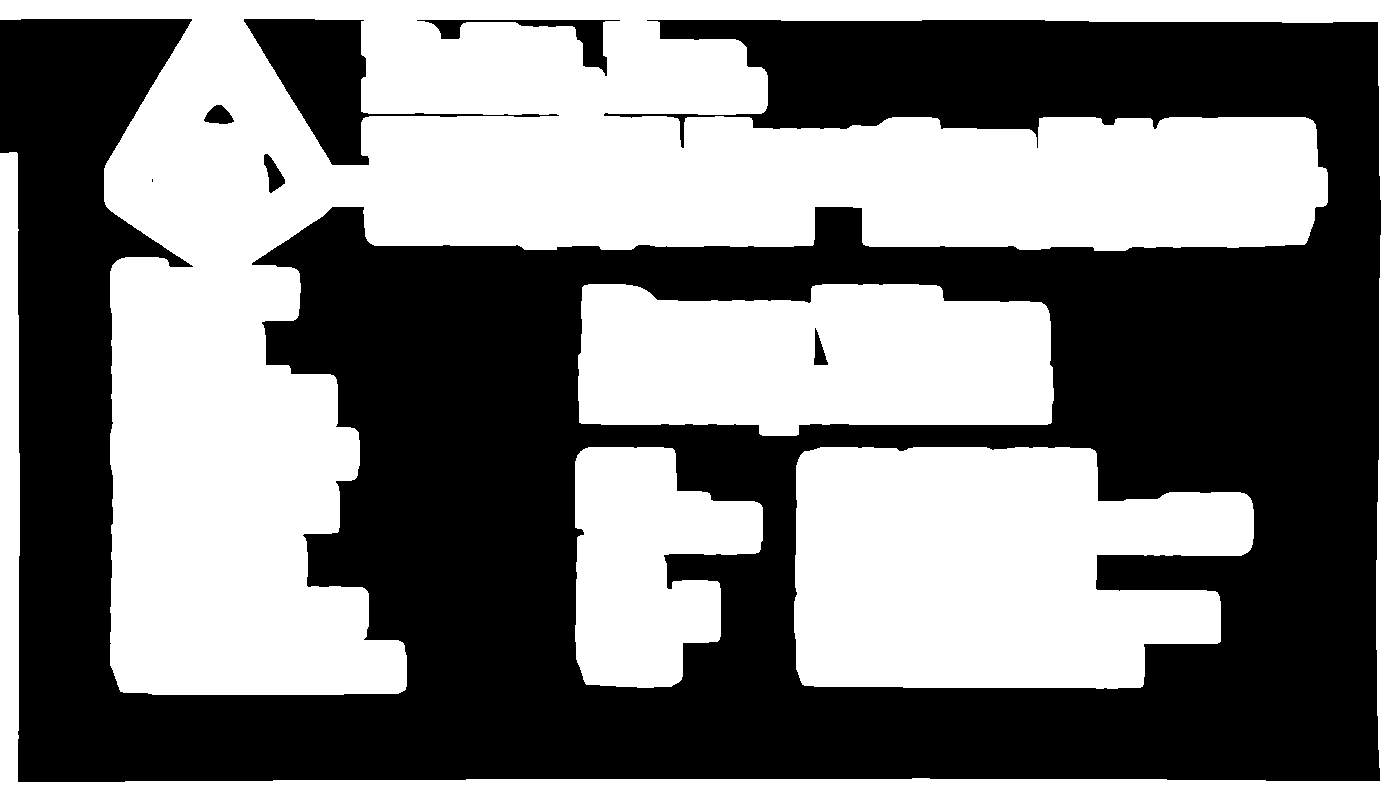
Comme vous pouvez le voir, il combine un peu le bloc de texte gauche avec l'en-tête de la carte, pour la plupart des cartes, cette méthode fonctionne très bien, mais sur les cartes plus occupées, elle peut causer des problèmes.
La raison pour laquelle il est mauvais pour ces contours de se connecter est qu'il rend la boîte englobante du contour presque prendre la carte entière.
Quelqu'un peut-il Suggérer une autre façon de trouver le texte pour assurer une détection correcte du texte?
200 points à celui qui peut trouver le texte dans la carte au-dessus de ces deux.

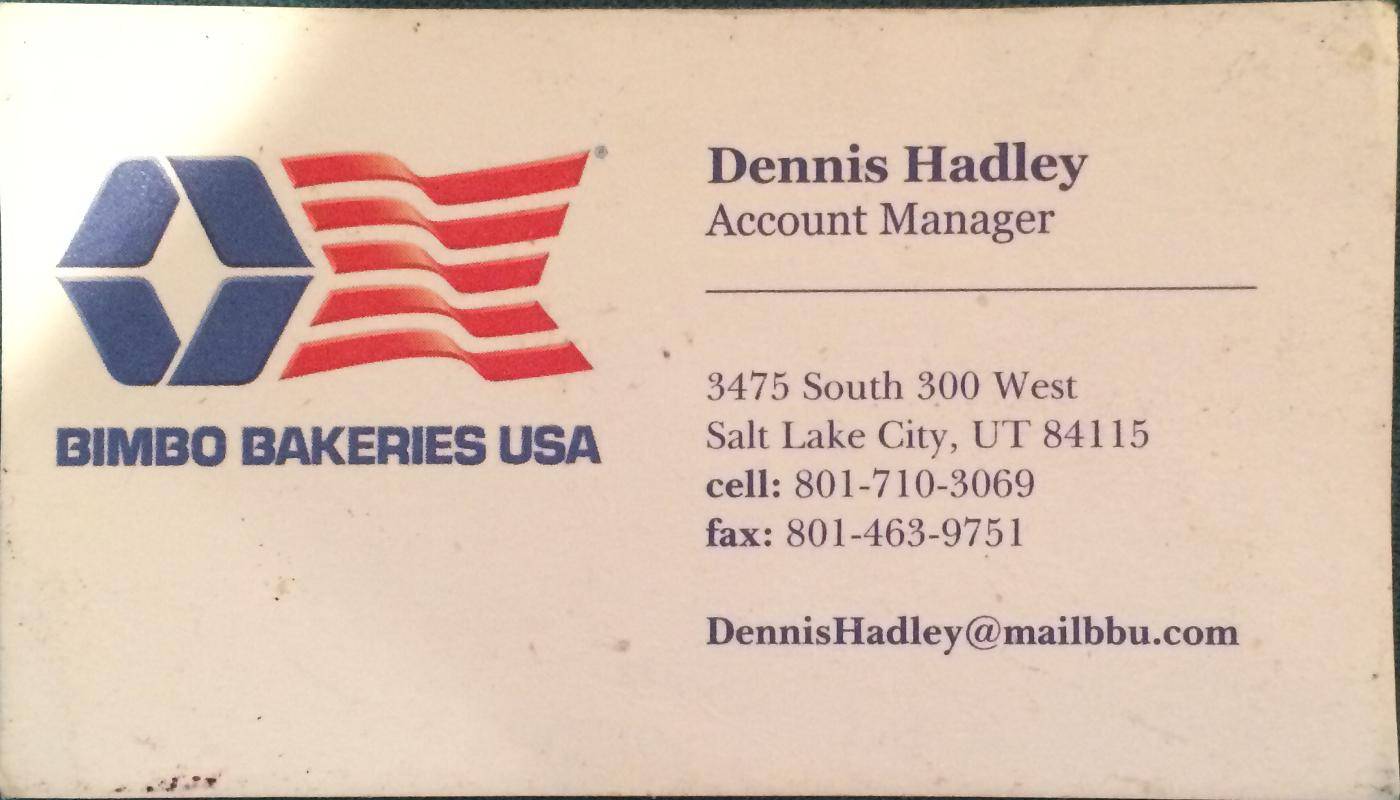
7 réponses
Vous pouvez détecter du texte en trouvant des éléments de bord proches (inspirés d'un LPD):
#include "opencv2/opencv.hpp"
std::vector<cv::Rect> detectLetters(cv::Mat img)
{
std::vector<cv::Rect> boundRect;
cv::Mat img_gray, img_sobel, img_threshold, element;
cvtColor(img, img_gray, CV_BGR2GRAY);
cv::Sobel(img_gray, img_sobel, CV_8U, 1, 0, 3, 1, 0, cv::BORDER_DEFAULT);
cv::threshold(img_sobel, img_threshold, 0, 255, CV_THRESH_OTSU+CV_THRESH_BINARY);
element = getStructuringElement(cv::MORPH_RECT, cv::Size(17, 3) );
cv::morphologyEx(img_threshold, img_threshold, CV_MOP_CLOSE, element); //Does the trick
std::vector< std::vector< cv::Point> > contours;
cv::findContours(img_threshold, contours, 0, 1);
std::vector<std::vector<cv::Point> > contours_poly( contours.size() );
for( int i = 0; i < contours.size(); i++ )
if (contours[i].size()>100)
{
cv::approxPolyDP( cv::Mat(contours[i]), contours_poly[i], 3, true );
cv::Rect appRect( boundingRect( cv::Mat(contours_poly[i]) ));
if (appRect.width>appRect.height)
boundRect.push_back(appRect);
}
return boundRect;
}
Utilisation:
int main(int argc,char** argv)
{
//Read
cv::Mat img1=cv::imread("side_1.jpg");
cv::Mat img2=cv::imread("side_2.jpg");
//Detect
std::vector<cv::Rect> letterBBoxes1=detectLetters(img1);
std::vector<cv::Rect> letterBBoxes2=detectLetters(img2);
//Display
for(int i=0; i< letterBBoxes1.size(); i++)
cv::rectangle(img1,letterBBoxes1[i],cv::Scalar(0,255,0),3,8,0);
cv::imwrite( "imgOut1.jpg", img1);
for(int i=0; i< letterBBoxes2.size(); i++)
cv::rectangle(img2,letterBBoxes2[i],cv::Scalar(0,255,0),3,8,0);
cv::imwrite( "imgOut2.jpg", img2);
return 0;
}
Résultats:
A. element = getStructuringElement(cv:: MORPH_RECT, cv:: Size(17, 3) );
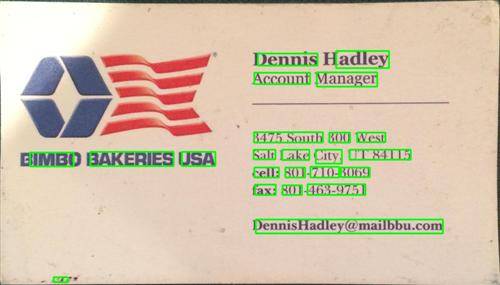

B. élément = getStructuringElement(cv::MORPH_RECT, cv::Size(30, 30) );
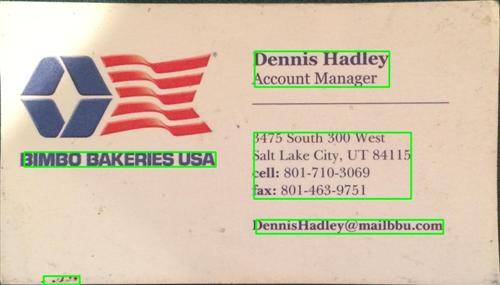

Les résultats sont similaires pour l'autre image mentionnée.
J'ai utilisé une méthode basée sur le gradient dans le programme ci-dessous. Ajout des images résultantes. Veuillez noter que j'utilise une version réduite de l'image pour le traitement.
Version C++
The MIT License (MIT)
Copyright (c) 2014 Dhanushka Dangampola
Permission is hereby granted, free of charge, to any person obtaining a copy
of this software and associated documentation files (the "Software"), to deal
in the Software without restriction, including without limitation the rights
to use, copy, modify, merge, publish, distribute, sublicense, and/or sell
copies of the Software, and to permit persons to whom the Software is
furnished to do so, subject to the following conditions:
The above copyright notice and this permission notice shall be included in
all copies or substantial portions of the Software.
THE SOFTWARE IS PROVIDED "AS IS", WITHOUT WARRANTY OF ANY KIND, EXPRESS OR
IMPLIED, INCLUDING BUT NOT LIMITED TO THE WARRANTIES OF MERCHANTABILITY,
FITNESS FOR A PARTICULAR PURPOSE AND NONINFRINGEMENT. IN NO EVENT SHALL THE
AUTHORS OR COPYRIGHT HOLDERS BE LIABLE FOR ANY CLAIM, DAMAGES OR OTHER
LIABILITY, WHETHER IN AN ACTION OF CONTRACT, TORT OR OTHERWISE, ARISING FROM,
OUT OF OR IN CONNECTION WITH THE SOFTWARE OR THE USE OR OTHER DEALINGS IN
THE SOFTWARE.
#include "stdafx.h"
#include <opencv2/core/core.hpp>
#include <opencv2/highgui/highgui.hpp>
#include <opencv2/imgproc/imgproc.hpp>
#include <iostream>
using namespace cv;
using namespace std;
#define INPUT_FILE "1.jpg"
#define OUTPUT_FOLDER_PATH string("")
int _tmain(int argc, _TCHAR* argv[])
{
Mat large = imread(INPUT_FILE);
Mat rgb;
// downsample and use it for processing
pyrDown(large, rgb);
Mat small;
cvtColor(rgb, small, CV_BGR2GRAY);
// morphological gradient
Mat grad;
Mat morphKernel = getStructuringElement(MORPH_ELLIPSE, Size(3, 3));
morphologyEx(small, grad, MORPH_GRADIENT, morphKernel);
// binarize
Mat bw;
threshold(grad, bw, 0.0, 255.0, THRESH_BINARY | THRESH_OTSU);
// connect horizontally oriented regions
Mat connected;
morphKernel = getStructuringElement(MORPH_RECT, Size(9, 1));
morphologyEx(bw, connected, MORPH_CLOSE, morphKernel);
// find contours
Mat mask = Mat::zeros(bw.size(), CV_8UC1);
vector<vector<Point>> contours;
vector<Vec4i> hierarchy;
findContours(connected, contours, hierarchy, CV_RETR_CCOMP, CV_CHAIN_APPROX_SIMPLE, Point(0, 0));
// filter contours
for(int idx = 0; idx >= 0; idx = hierarchy[idx][0])
{
Rect rect = boundingRect(contours[idx]);
Mat maskROI(mask, rect);
maskROI = Scalar(0, 0, 0);
// fill the contour
drawContours(mask, contours, idx, Scalar(255, 255, 255), CV_FILLED);
// ratio of non-zero pixels in the filled region
double r = (double)countNonZero(maskROI)/(rect.width*rect.height);
if (r > .45 /* assume at least 45% of the area is filled if it contains text */
&&
(rect.height > 8 && rect.width > 8) /* constraints on region size */
/* these two conditions alone are not very robust. better to use something
like the number of significant peaks in a horizontal projection as a third condition */
)
{
rectangle(rgb, rect, Scalar(0, 255, 0), 2);
}
}
imwrite(OUTPUT_FOLDER_PATH + string("rgb.jpg"), rgb);
return 0;
}
Version Python
The MIT License (MIT)
Copyright (c) 2017 Dhanushka Dangampola
Permission is hereby granted, free of charge, to any person obtaining a copy
of this software and associated documentation files (the "Software"), to deal
in the Software without restriction, including without limitation the rights
to use, copy, modify, merge, publish, distribute, sublicense, and/or sell
copies of the Software, and to permit persons to whom the Software is
furnished to do so, subject to the following conditions:
The above copyright notice and this permission notice shall be included in
all copies or substantial portions of the Software.
THE SOFTWARE IS PROVIDED "AS IS", WITHOUT WARRANTY OF ANY KIND, EXPRESS OR
IMPLIED, INCLUDING BUT NOT LIMITED TO THE WARRANTIES OF MERCHANTABILITY,
FITNESS FOR A PARTICULAR PURPOSE AND NONINFRINGEMENT. IN NO EVENT SHALL THE
AUTHORS OR COPYRIGHT HOLDERS BE LIABLE FOR ANY CLAIM, DAMAGES OR OTHER
LIABILITY, WHETHER IN AN ACTION OF CONTRACT, TORT OR OTHERWISE, ARISING FROM,
OUT OF OR IN CONNECTION WITH THE SOFTWARE OR THE USE OR OTHER DEALINGS IN
THE SOFTWARE.
import cv2
import numpy as np
large = cv2.imread('1.jpg')
rgb = cv2.pyrDown(large)
small = cv2.cvtColor(rgb, cv2.COLOR_BGR2GRAY)
kernel = cv2.getStructuringElement(cv2.MORPH_ELLIPSE, (3, 3))
grad = cv2.morphologyEx(small, cv2.MORPH_GRADIENT, kernel)
_, bw = cv2.threshold(grad, 0.0, 255.0, cv2.THRESH_BINARY | cv2.THRESH_OTSU)
kernel = cv2.getStructuringElement(cv2.MORPH_RECT, (9, 1))
connected = cv2.morphologyEx(bw, cv2.MORPH_CLOSE, kernel)
# using RETR_EXTERNAL instead of RETR_CCOMP
contours, hierarchy = cv2.findContours(connected.copy(), cv2.RETR_EXTERNAL, cv2.CHAIN_APPROX_NONE)
mask = np.zeros(bw.shape, dtype=np.uint8)
for idx in range(len(contours)):
x, y, w, h = cv2.boundingRect(contours[idx])
mask[y:y+h, x:x+w] = 0
cv2.drawContours(mask, contours, idx, (255, 255, 255), -1)
r = float(cv2.countNonZero(mask[y:y+h, x:x+w])) / (w * h)
if r > 0.45 and w > 8 and h > 8:
cv2.rectangle(rgb, (x, y), (x+w-1, y+h-1), (0, 255, 0), 2)
cv2.imshow('rects', rgb)

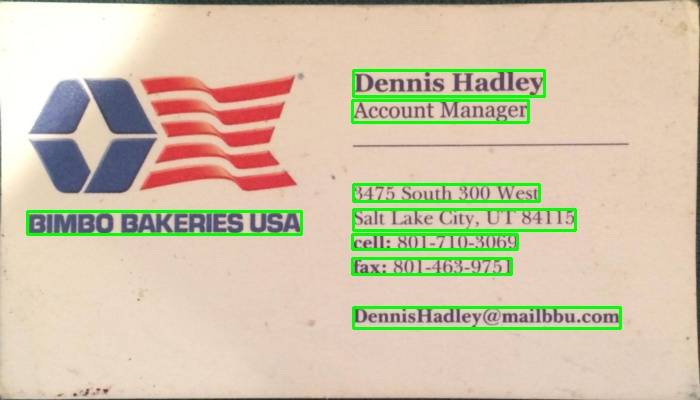

Voici une autre approche que j'ai utilisée pour détecter les blocs de texte:
- convertit l'image en niveaux de gris
- appliqué seuil (seuil binaire simple, avec une valeur triée à la main de 150 comme valeur seuil)
- appliqué dilatation pour épaissir les lignes dans l'image, conduisant à des objets plus compacts et moins de fragments d'espace blanc. Utilisé une valeur élevée pour le nombre d'itérations, donc la dilatation est très lourde (13 itérations, également triées sur le volet pour optimiser résultat).
- contours identifiés des objets dans l'image résultante à l'aide de la fonction opencv findContours.
- a dessiné une boîte englobante (rectangle) circonscrivant chaque objet profilé - chacun d'eux encadre un bloc de texte.
- les zones éventuellement ignorées qui sont peu susceptibles d'être l'objet que vous recherchez (par exemple les blocs de texte) étant donné leur taille, car l'algorithme ci-dessus peut également trouver des objets entrecroisés ou imbriqués (comme toute la zone supérieure de la première carte). ce qui pourrait être inintéressant pour vos besoins.
Ci-dessous est le code écrit en python avec pyopencv, il devrait facile de porter en C++.
import cv2
image = cv2.imread("card.png")
gray = cv2.cvtColor(image,cv2.COLOR_BGR2GRAY) # grayscale
_,thresh = cv2.threshold(gray,150,255,cv2.THRESH_BINARY_INV) # threshold
kernel = cv2.getStructuringElement(cv2.MORPH_CROSS,(3,3))
dilated = cv2.dilate(thresh,kernel,iterations = 13) # dilate
_, contours, hierarchy = cv2.findContours(dilated,cv2.RETR_EXTERNAL,cv2.CHAIN_APPROX_NONE) # get contours
# for each contour found, draw a rectangle around it on original image
for contour in contours:
# get rectangle bounding contour
[x,y,w,h] = cv2.boundingRect(contour)
# discard areas that are too large
if h>300 and w>300:
continue
# discard areas that are too small
if h<40 or w<40:
continue
# draw rectangle around contour on original image
cv2.rectangle(image,(x,y),(x+w,y+h),(255,0,255),2)
# write original image with added contours to disk
cv2.imwrite("contoured.jpg", image)
L'image originale est la première image dans votre message.
Après le prétraitement (niveaux de gris, seuil et dilatation - donc après l'étape 3), l'image ressemblait à ceci:
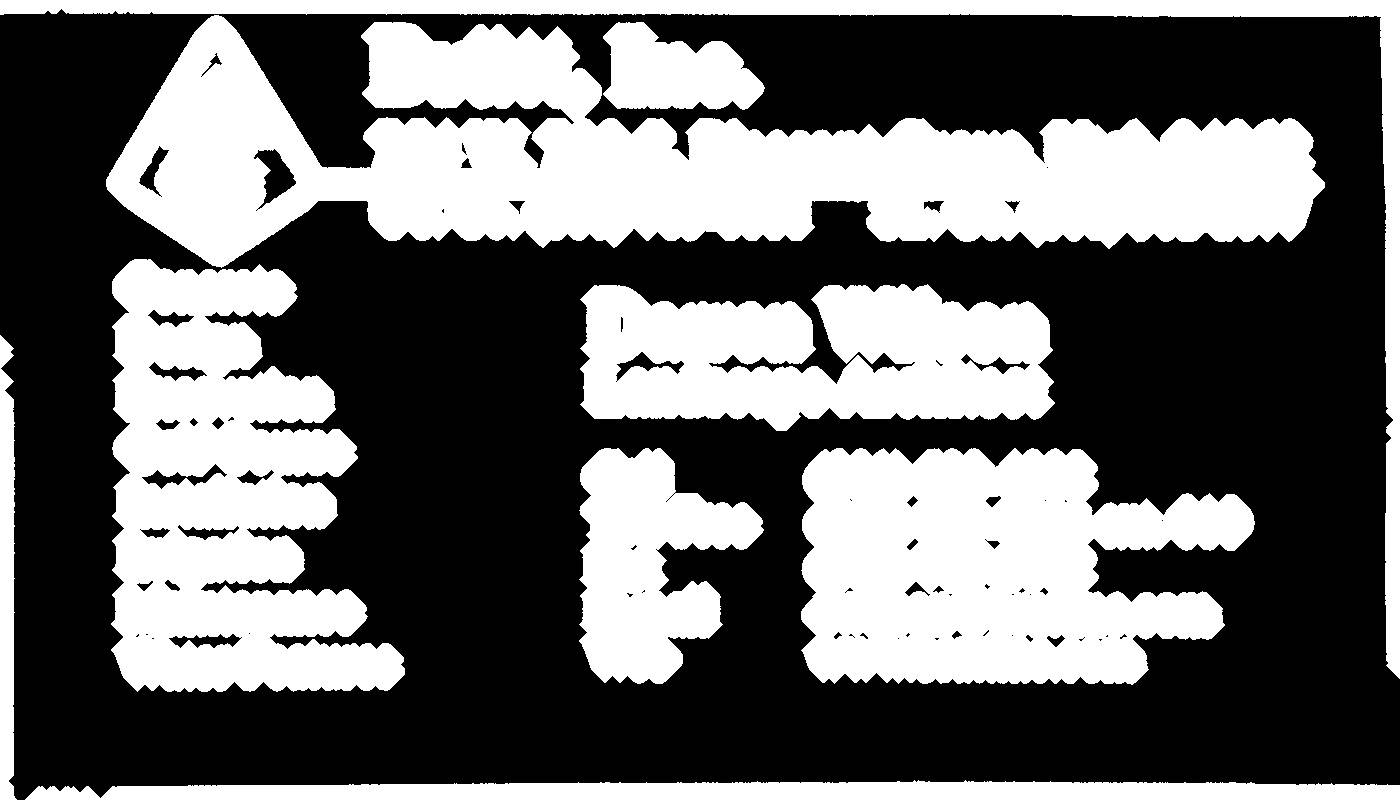
Ci-dessous est l'image résultante ("profilée.jpg " dans la dernière ligne); les boîtes de délimitation finales pour les objets dans l'image ressemblent à ce:
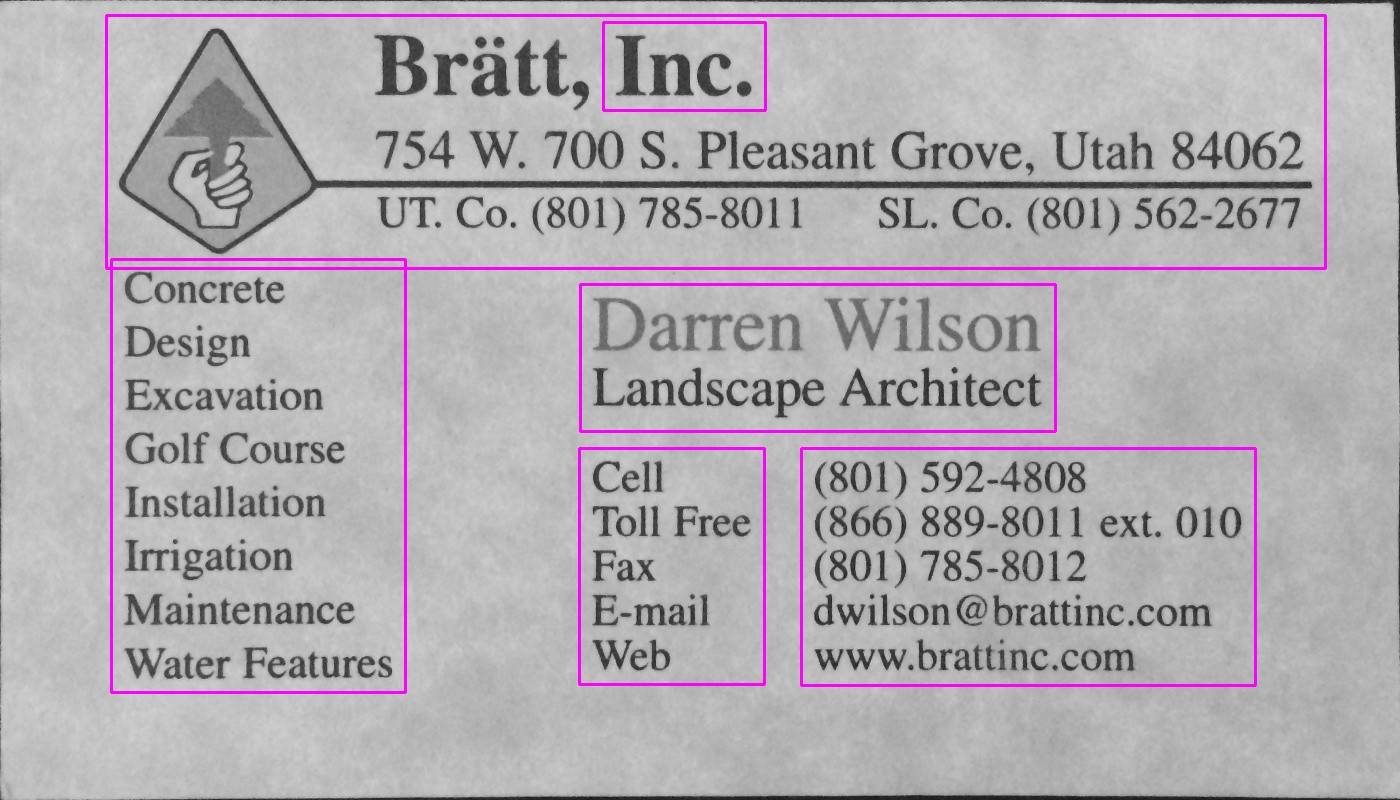
Vous pouvez voir que le bloc de texte à gauche est détecté comme un bloc séparé, délimité de son environnement.
En utilisant le même script avec les mêmes paramètres (sauf pour le type de seuillage qui a été modifié pour la deuxième image comme décrit ci-dessous), voici les résultats pour les 2 autres cartes:
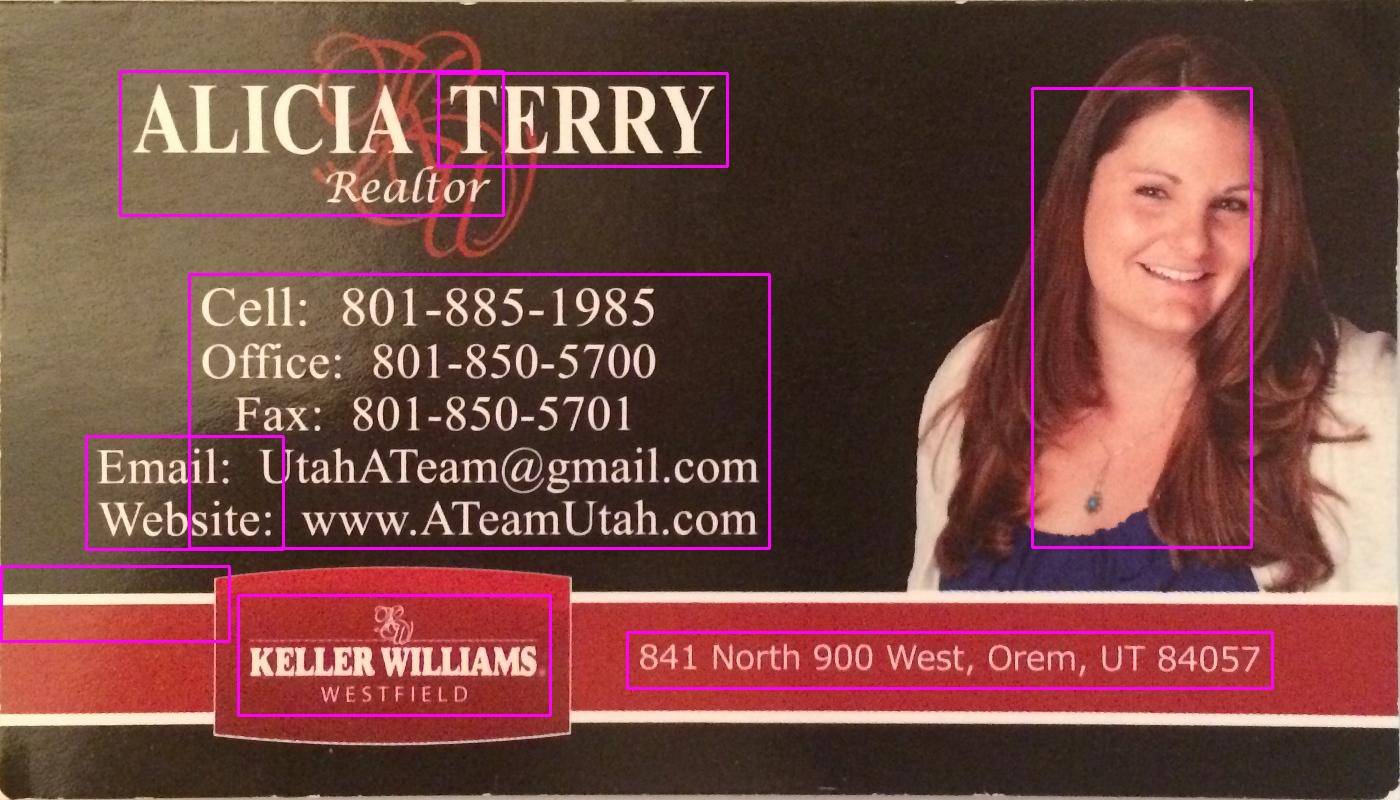
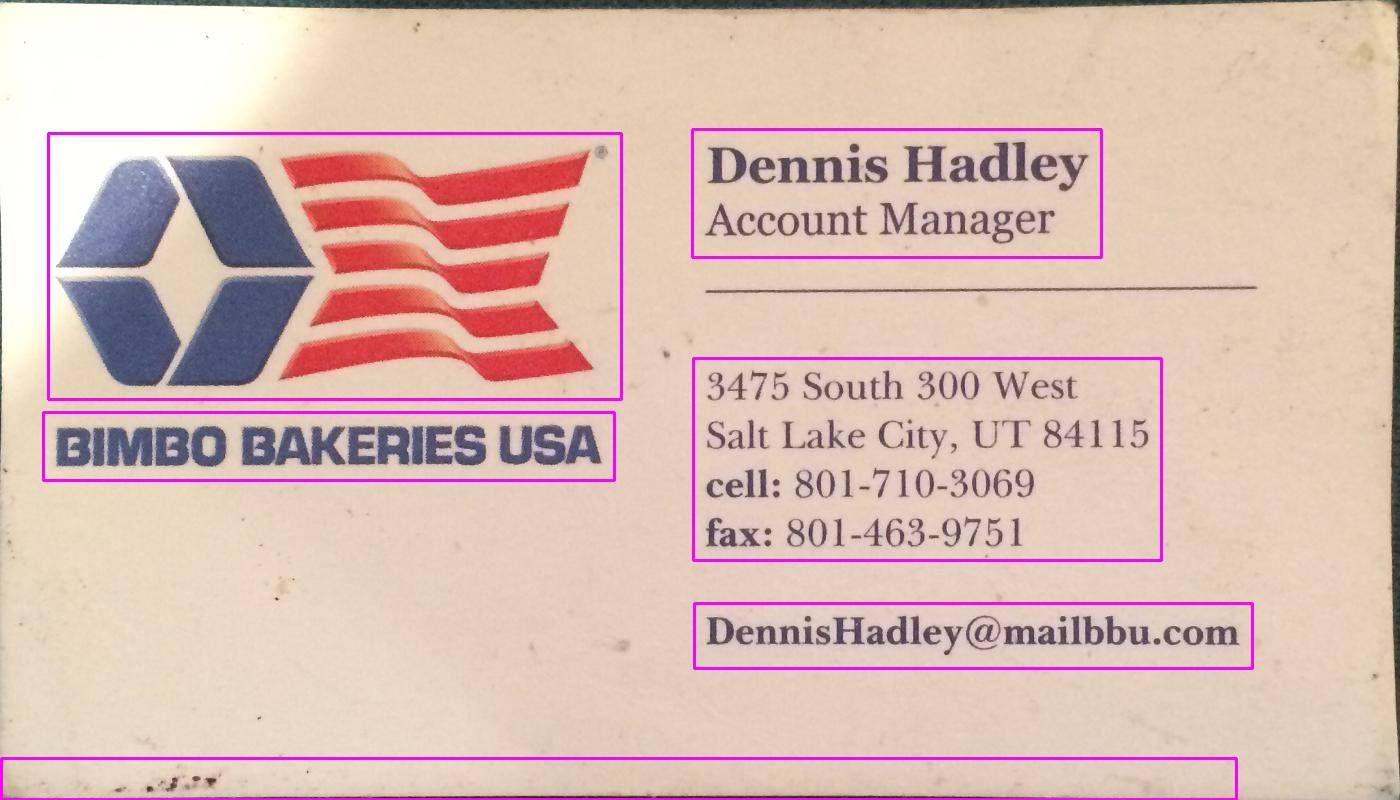
Réglage des paramètres
Les paramètres (valeur seuil, paramètres de dilatation) ont été optimisés pour cette image et cette tâche (trouver des blocs de texte) et peut être ajustée, si nécessaire, pour d'autres images de cartes ou d'autres types d'objets à trouver.
Pour le seuillage (étape 2), j'ai utilisé un seuil noir. Pour les images où le texte est plus clair que l'arrière-plan, comme la deuxième image dans votre message, un seuil blanc doit être utilisé, alors remplacez le type de maintien par cv2.THRESH_BINARY). Pour la deuxième image, j'ai également utilisé une valeur légèrement plus élevée pour le seuil (180). Faire varier les paramètres de la valeur de seuil et le nombre d'itérations pour la dilatation entraînera différents degrés de sensibilité dans la délimitation des objets dans l'image.
Recherche d'autres types d'objets:
Par exemple, diminuer la dilatation à 5 itérations dans la première image nous donne une délimitation plus fine des objets dans l'image, en trouvant grosso modo tous les mots dans l'image (plutôt que des blocs de texte):
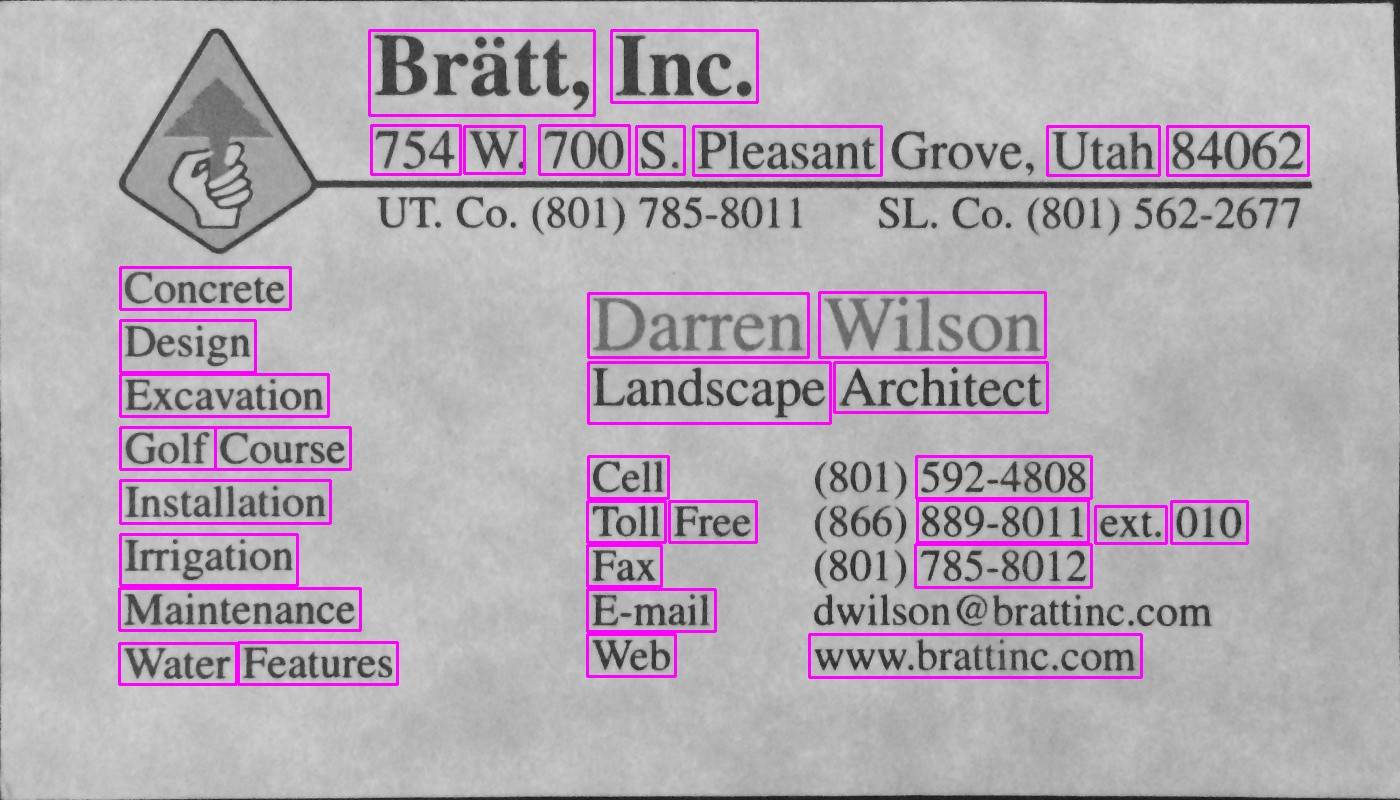
Connaissant la taille approximative d'un mot, j'ai jeté ici des zones trop petites (en dessous de 20 pixels de largeur ou de hauteur) ou trop grand (au-dessus de 100 pixels de largeur ou de hauteur) pour ignorer les objets qui sont peu susceptibles d'être des mots, pour obtenir les résultats dans l'image ci-dessus.
L'approche de@dhanushka a montré le plus prometteur, mais je voulais jouer en Python, alors je suis allé de l'avant et je l'ai traduit pour le plaisir:
import cv2
import numpy as np
from cv2 import boundingRect, countNonZero, cvtColor, drawContours, findContours, getStructuringElement, imread, morphologyEx, pyrDown, rectangle, threshold
large = imread(image_path)
# downsample and use it for processing
rgb = pyrDown(large)
# apply grayscale
small = cvtColor(rgb, cv2.COLOR_BGR2GRAY)
# morphological gradient
morph_kernel = getStructuringElement(cv2.MORPH_ELLIPSE, (3, 3))
grad = morphologyEx(small, cv2.MORPH_GRADIENT, morph_kernel)
# binarize
_, bw = threshold(src=grad, thresh=0, maxval=255, type=cv2.THRESH_BINARY+cv2.THRESH_OTSU)
morph_kernel = getStructuringElement(cv2.MORPH_RECT, (9, 1))
# connect horizontally oriented regions
connected = morphologyEx(bw, cv2.MORPH_CLOSE, morph_kernel)
mask = np.zeros(bw.shape, np.uint8)
# find contours
im2, contours, hierarchy = findContours(connected, cv2.RETR_CCOMP, cv2.CHAIN_APPROX_SIMPLE)
# filter contours
for idx in range(0, len(hierarchy[0])):
rect = x, y, rect_width, rect_height = boundingRect(contours[idx])
# fill the contour
mask = drawContours(mask, contours, idx, (255, 255, 2555), cv2.FILLED)
# ratio of non-zero pixels in the filled region
r = float(countNonZero(mask)) / (rect_width * rect_height)
if r > 0.45 and rect_height > 8 and rect_width > 8:
rgb = rectangle(rgb, (x, y+rect_height), (x+rect_width, y), (0,255,0),3)
Pour afficher l'image:
from PIL import Image
Image.fromarray(rgb).show()
Pas le plus pythonique des scripts mais j'ai essayé de ressembler au code C++ original aussi étroitement que possible pour les lecteurs à suivre.
Cela fonctionne presque aussi bien que l'original. Je serai heureux de lire des suggestions comment il pourrait être amélioré/Corrigé pour ressembler aux résultats originaux entièrement.
Vous pouvez essayer cette méthode qui est développée par Chucai Yi et Yingli Tian.
Ils partagent également un logiciel (qui est basé sur Opencv-1.0 et il devrait fonctionner sous la plate-forme Windows.) que vous pouvez utiliser (bien qu'aucun code source disponible). Il va générer toutes les zones de délimitation du texte (affichées dans les ombres de couleur) dans l'image. En appliquant à vos exemples d'images, vous obtiendrez les résultats suivants:
Remarque: pour rendre le résultat plus robuste, vous pouvez fusionner les cases ainsi.


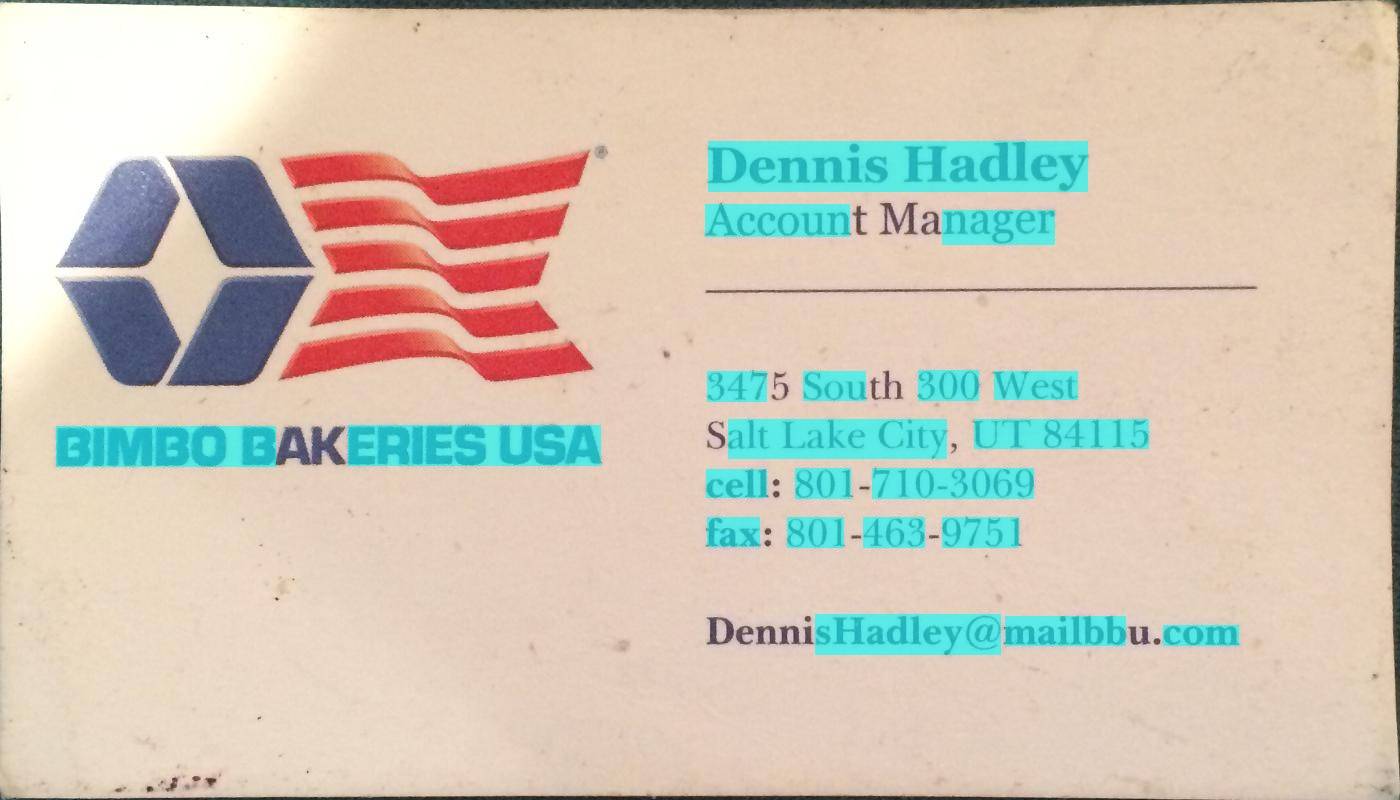
Mise à jour: Si votre but ultime est de reconnaître les textes dans l'image, vous pouvez consulter gttext, qui est un logiciel libre OCR et un outil de vérification au sol pour les Images en couleur avec du texte. Le code Source est également disponible.
Avec cela, vous pouvez obtenir des textes reconnus comme:

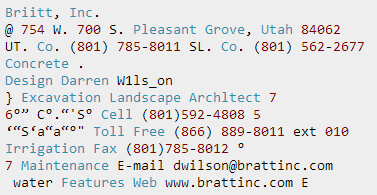

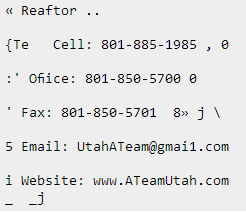

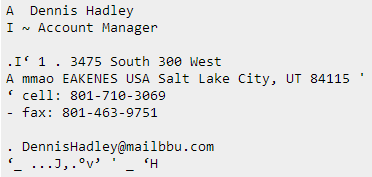
Ci-dessus code JAVA version: Merci @ William
public static List<Rect> detectLetters(Mat img){
List<Rect> boundRect=new ArrayList<>();
Mat img_gray =new Mat(), img_sobel=new Mat(), img_threshold=new Mat(), element=new Mat();
Imgproc.cvtColor(img, img_gray, Imgproc.COLOR_RGB2GRAY);
Imgproc.Sobel(img_gray, img_sobel, CvType.CV_8U, 1, 0, 3, 1, 0, Core.BORDER_DEFAULT);
//at src, Mat dst, double thresh, double maxval, int type
Imgproc.threshold(img_sobel, img_threshold, 0, 255, 8);
element=Imgproc.getStructuringElement(Imgproc.MORPH_RECT, new Size(15,5));
Imgproc.morphologyEx(img_threshold, img_threshold, Imgproc.MORPH_CLOSE, element);
List<MatOfPoint> contours = new ArrayList<MatOfPoint>();
Mat hierarchy = new Mat();
Imgproc.findContours(img_threshold, contours,hierarchy, 0, 1);
List<MatOfPoint> contours_poly = new ArrayList<MatOfPoint>(contours.size());
for( int i = 0; i < contours.size(); i++ ){
MatOfPoint2f mMOP2f1=new MatOfPoint2f();
MatOfPoint2f mMOP2f2=new MatOfPoint2f();
contours.get(i).convertTo(mMOP2f1, CvType.CV_32FC2);
Imgproc.approxPolyDP(mMOP2f1, mMOP2f2, 2, true);
mMOP2f2.convertTo(contours.get(i), CvType.CV_32S);
Rect appRect = Imgproc.boundingRect(contours.get(i));
if (appRect.width>appRect.height) {
boundRect.add(appRect);
}
}
return boundRect;
}
Et utilisez ce code dans la pratique:
System.loadLibrary(Core.NATIVE_LIBRARY_NAME);
Mat img1=Imgcodecs.imread("abc.png");
List<Rect> letterBBoxes1=Utils.detectLetters(img1);
for(int i=0; i< letterBBoxes1.size(); i++)
Imgproc.rectangle(img1,letterBBoxes1.get(i).br(), letterBBoxes1.get(i).tl(),new Scalar(0,255,0),3,8,0);
Imgcodecs.imwrite("abc1.png", img1);
Implémentation Python pour la solution de @dhanushka:
def process_rgb(rgb):
hasText = 0
gray = cv2.cvtColor(rgb, cv2.COLOR_BGR2GRAY);
morphKernel = cv2.getStructuringElement(cv2.MORPH_ELLIPSE, (3,3))
grad = cv2.morphologyEx(gray, cv2.MORPH_GRADIENT, morphKernel)
# binarize
_, bw = cv2.threshold(grad, 0.0, 255.0, cv2.THRESH_BINARY | cv2.THRESH_OTSU)
# connect horizontally oriented regions
morphKernel = cv2.getStructuringElement(cv2.MORPH_RECT, (9, 1))
connected = cv2.morphologyEx(bw, cv2.MORPH_CLOSE, morphKernel)
# find contours
mask = np.zeros(bw.shape[:2], dtype="uint8");
_,contours, hierarchy = cv2.findContours(connected, cv2.RETR_CCOMP, cv2.CHAIN_APPROX_SIMPLE)
# filter contours
idx = 0
while idx >= 0:
x,y,w,h = cv2.boundingRect(contours[idx]);
# fill the contour
cv2.drawContours(mask, contours, idx, (255, 255, 255), cv2.FILLED);
# ratio of non-zero pixels in the filled region
r = cv2.contourArea(contours[idx])/(w*h)
if(r > 0.45 and h > 5 and w > 5 and w > h):
cv2.rectangle(rgb, (x,y), (x+w,y+h), (0, 255, 0), 2)
hasText = 1
idx = hierarchy[0][idx][0]
return hasText, rgb
